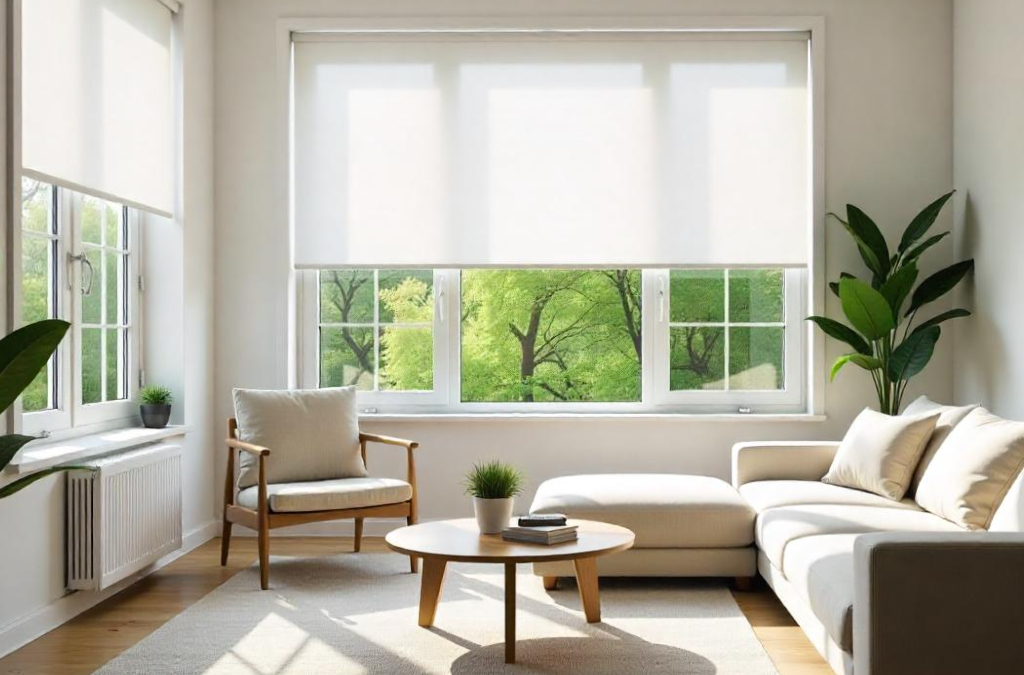Orange Beach Blinds understands how your home’s design choices affect your health. Located in Orange Beach, Alabama, we assist homeowners in making health-conscious, elegant choices that improve both comfort and well-being. Let’s look at how the correct window treatments can help eliminate allergy triggers and which solutions are best for creating a clean, allergen-free space.
Why Window Treatments Matter for Allergy Control
Pollen, dust, mold spores, and other allergens can easily enter your home through the windows. Poorly chosen or neglected window treatments can accumulate and trap these irritants, fostering an environment in which airborne allergens thrive. Selecting the appropriate materials and designs can:
- Limit dust accumulation.
- Prevent outside allergens from entering
- Provide surfaces that are easy to clean.
- Promote better indoor air quality.
By being intentional about your window treatments, you can significantly limit the number of allergens in your home.
Top Window Treatment Options for Allergy Control
Allergy sufferers should be especially wary of home surfaces that tend to retain airborne particles—and window treatments are among the most common culprits. The good news is that with the correct window treatments, they can do more than just block light; they can also help you prevent allergies.
Let’s look deeper at some of the best window treatments for managing indoor allergies and increasing air quality in your home.
1. Plantation Shutters – Easy to Clean, Classic in Style
Plantation shutters are a popular choice for allergy control—and for good reason. Unlike heavy curtains or layered drapes, they are usually made of non-porous materials such as wood, vinyl, or composite, which do not accumulate dust or harbor allergens.
Why They Work:
- Dust mites, pet dander, and pollen are less likely to accumulate on smooth, hard surfaces.
- Because of their sturdy design, you can clean them frequently without causing damage—just use a moist microfiber cloth or a non-toxic spray cleaner.
- When closed, its tight seal helps to keep pollen and pollutants out of your home throughout allergy season.
- They also provide exceptional light control, allowing you to regulate temperature without opening windows on high-pollen days.
2. Roller Shades – Sleek, Modern, and Low-Allergen
Roller shades are a minimalist’s dream, but they’re also a useful option for asthma and allergy sufferers. Their flat form and non-textured surface leave less space for allergens to cling.
Why They Work
- Many are constructed of synthetic, non-fabric materials that do not retain airborne allergens.
- Easy to clean—just wipe them down with a moist towel or lightly vacuum with a handheld attachment.
- Ideal for modern, streamlined homes, particularly in spaces such as kitchens, bathrooms, and home offices where dust control is essential.
- Some roller shades can be motorized, allowing you to adjust them without making physical contact, further lowering the possibility of disturbing trapped dust.
For those who want style with health-conscious practicality, roller shades are a win-win.
3. Roman Shades – Soft Style, Allergy-Smart Options
Roman shades add a touch of elegance and gentleness without the bulk of traditional curtains. While they do contain fabric, you can still choose allergy-friendly options.
Why They Work
- Choose tightly woven or treated textiles that are dust and static-resistant.
- Choose flat-fold or streamlined designs to reduce crevices where dust can accumulate.
- Select options that are machine washable or made from materials designed for easy spot cleaning.
- Roman shades can also be lined with light-blocking or antimicrobial fabric, which provides a protective barrier that reduces indoor allergens while improving light control.
Pro tip: If you love the look of fabric but hate the idea of dust traps, Roman shades strike a great balance when made from the right materials.
4. Woven Wood Shades – Natural Texture with a Clean Finish
Woven wood blinds are generally made from renewable materials such as bamboo, jute, or grasses, making them both environmentally beneficial and fashionable. While natural materials might occasionally harbor allergens, modern treatments make them an excellent choice for health-conscious homes.
Why They Work
- Choose woven wood shades with polyester backing or sealed finishes for a smoother, dust-resistant surface.
- Pair them with privacy liners to help prevent entering outdoor particles while maintaining light control.
- Dust easily with a microfiber cloth, and custom-fitted versions are available to decrease airflow leaks at the edges.
- Their natural texture adds warmth and coastal charm—perfect for Orange Beach homes.
With regular upkeep and protective finishes, woven wood shades offer the best of both worlds: organic beauty and indoor air quality support.
Cellular (Honeycomb) Shades – Smart Design for Clean Living
Cellular shades are known for their energy efficiency, but they also help greatly with allergen control. Their distinctive honeycomb structure traps air, creating a natural barrier against outside contaminants.
Why They Work
- Made of anti-static, synthetic materials that prevent dust and allergy buildup.
- Their construction helps to insulate windows, limiting temperature changes that can lead to indoor dampness and mold growth.
- Available in top-down/bottom-up designs for greater control over airflow, light, and privacy.
- They filter light while also preventing airborne allergens from moving as freely.
Cellular shades are an excellent choice for spaces that require a balance of energy efficiency, quietness, and allergy resistance, such as bedrooms or nurseries.
Tips for Maintaining Allergy-Friendly Window Treatments
Choosing the right window coverings is only half the battle—you also need to maintain them properly to keep allergens at bay.
Cleaning Tips:
- Dust weekly using a microfiber cloth or a vacuum with a gentle brush attachment.
- Avoid strong chemicals that may cause hypersensitivity.
- Spot-clean or machine-wash fabric blinds every few months.
- Keep your windows and sills clean and dry to avoid mold and mildew growth.
Pro Tip: Use Air Purifiers Nearby
Placing HEPA air purifiers near windows can further reduce allergens that sneak in, especially when windows are open during mild Alabama winters or breezy coastal days.
Window Treatments to Avoid If You Have Allergies
Not all window treatments are allergy-friendly. Here are a few you might want to skip:
- Heavy drapes: Thick, plush fabrics trap dust and are difficult to clean.
- Curtains with pleats and folds: These collect airborne particles and pet dander.
- Untreated woven woods: Natural fibers can harbor mold and allergens if not sealed properly.
If you already have these in place, regular washing or replacing them with allergy-friendly alternatives is the best option.
Why Local Expertise Matters for Allergy-Smart Window Treatments
At Orange Beach Blinds, we understand the particular problems of coastal life, such as increased humidity, seasonal pollen spikes, and salt in the air. Our experts can provide personalized solutions based on your needs, lifestyle, and health issues.
We’ll help you select materials and finishes that are:
- Easy to clean
- Hypoallergenic
- Resistant to mold and mildew
- Durable in humid climates
Breathe Easier with Orange Beach Blinds
If you or a family member suffer from allergies, the window treatments you choose can make a significant difference. Orange Beach Blinds’ team will assist you in finding the best allergy-friendly options for your style, budget, and health goals.
Whether you’re searching for plantation shutters, roller shades, woven wood, or Roman shades, we have bespoke solutions and expert installation to improve your home and wellbeing.
Call Orange Beach Blinds today at 251-597-4505 for a free consultation. Let us help you make your home healthier and more beautiful – one window at a time.



Recent Comments